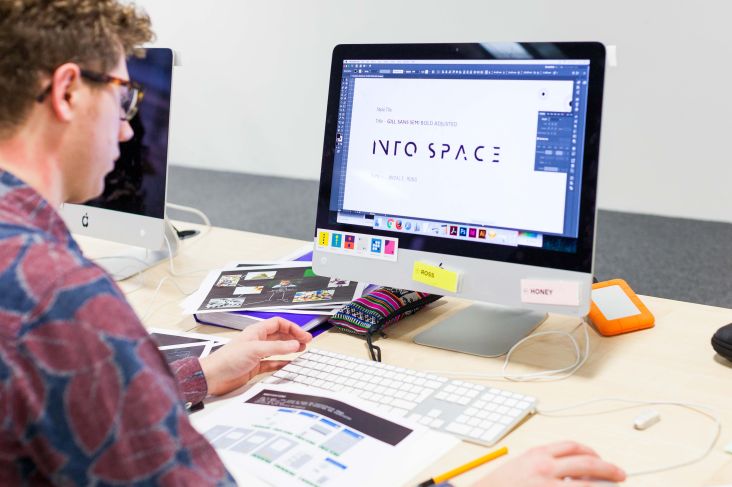How to go freelance, your step-by-step guide
There are many reasons why you might want to go freelance. It might be that you're sick of working for someone else and you'd love to be your own boss.

Image licensed via Adobe Stock
You might be dreaming about working from home after years of commuting. Or you may not have a choice, after recently losing your job. Whatever the reason, I've put together this step-by-step guide to help you start a business.
This article is more about how to get going rather than finding those all-important first customers. It's an area I feel isn't covered as much. So on National Freelancers Day, here's an update to an article I wrote nearly 10 years ago.
Consider your business structure
When setting up a new business, you have to decide if you're going to be a sole trader, limited company or partnership. You need to choose the business structure you'll trade under and of course, understand the obligations and responsibilities you will have as the business owner.
If you've always been confused by company structures, then read this article to learn everything about the two most common structures: sole traders and limited companies. Also, read this advice on legal structures.
Choose a business name
When choosing a name, whether it's a trading name as a sole trader/partnership or a limited company name, there are various things you should take into account.
Firstly, make sure it's professional and inoffensive. Legally, your business name mustn't contain any sensitive words, and if you're a sole trader or partnership, you mustn't include limited company-related words such as 'Ltd'.
If you're a limited company, you must check that your proposed name is unique and available via Companies House by using their free service. Here, you'll be able to see if anyone else has your company name.
If you're a sole trader, then you must do some research online and via phone directories to make sure your trading name is as unique as possible.
One final tip – if you're going to have a website for your business, check available domain names via any of the domain name registration sites, like 123-reg.co.uk. For SEO purposes, consider adding in your key service to the domain name.
Sort your branding
You need to have a visual identity. Something that will differentiate your company from the competition. Get a logo and some basic stationery sorted, including letterheads, business cards and compliment slips. (If you're not a designer and you can't yet afford to hire one, then Graphic River has lots of affordable logo templates.
Of course, you can't skip this, as you'll need a logo before you approach a bank and set up your business account. Something I'd strongly advise organising as soon as possible — more on this to follow.
Get a business bank account
To keep invoices and payments in order, I'd recommend setting up a separate business account as a priority. The bank you choose is likely to book you an appointment with one of their business managers. They'll require a few things to get you set up, including a letterhead with your logo (see above), business name and address; photo ids such as a driver's licence or passport and proof of address. And that should pretty much get you started. If you're a limited company, they may need to see additional documents.
Accounts & bookkeeping
One of the most important aspects of running any business is the accounts, so set up a financial bookkeeping system immediately. Keep records of all of your invoices and payments at the end of every month. Make sure you file these correctly to save yourself any hassle further down the line.
To make life as easy as possible, use accounting software such as FreeAgent, where you can quickly generate invoices, estimates and track time plus hook your business bank account up to the platform and keep on top of all your incomings and outgoings. I use it for both my businesses, and it has made accounting a breeze.
Next, find a decent accountant. They'll cost you money at the end of each financial year, but they'll be a lifesaver when it comes to organising your accounts. When it's time to sort your tax, print out all of your invoices from that financial year, and put together all of your bank statements. Don't forget to include receipts, payments and any other business costs or overheads, including travel. And you must place your logo/business name on all official documents and stationery. And hey, if you've got FreeAgent – you could give your accountant a login, so they're able to go directly through that as well.
Taxes, NI and VAT
In terms of making things official, you'll have to register as self-employed with HM Revenue & Customs (HMRC) if you're a sole trader and you'll have to pay income tax and National Insurance contributions. If you're a limited company, you must tell HMRC if it's liable for Corporation Tax, pay any Corporation Tax due and file a Company Tax Return on time. If in doubt, check out the HMRC website. Or get your accountant to sort all of this for you.
Next, you'll need to contact HMRC to register for VAT if you expect to have more than £85,000 turnover a year – as of 1 April 2020. Not sure about VAT? Read this Introduction to VAT to understand how it works.
Working from home?
If you're going to be a homeworker, you must contact your local authority to find out whether you need to pay any business rates. You should also take into account that working from home could have implications on your mortgage, home insurance and even your tax situation. It's not necessarily as straightforward as you might think, so check things out before you proceed.
One last thing
Read this helpful Government online guide on setting up a business. It'll ensure you're correctly set up and covers just about everything you need to know before you start your own business.



















, Idrees Saleem, Created Motion Design Professional](https://www.creativeboom.com/upload/articles/65/657cf959d6fe2991b1966186ead7ed471db921e4_732.png)





